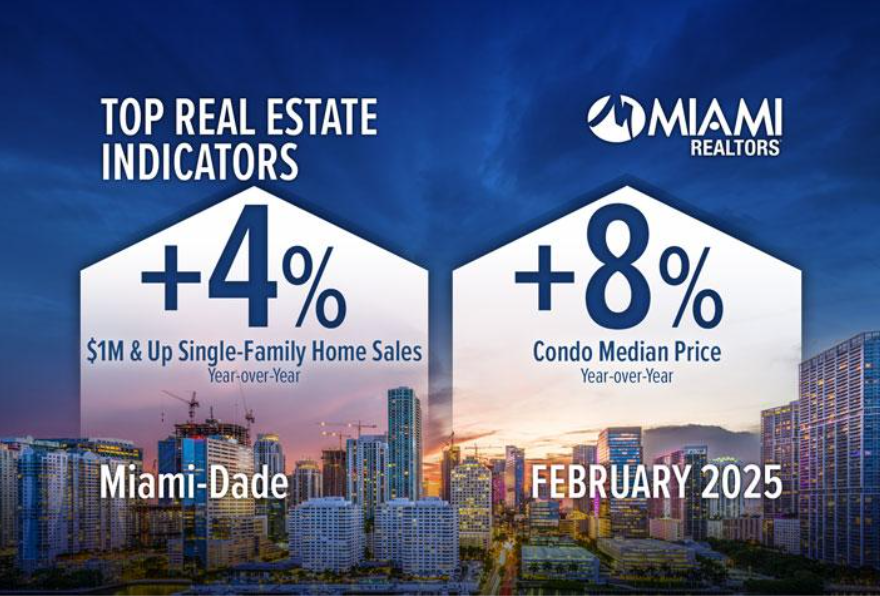
Miami’s real estate market continues to thrive in early 2025, with recent data reaffirming the city’s status as a national leader in luxury housing and price growth. According to the MIAMI Association of Realtors and Southeast Florida MLS, both the single-family and condo markets posted year-over-year gains in February — especially in the $1 million and up luxury segment. Sales of single-family homes in this tier rose by 3.6%, while condo median prices surged 8.3% over the same period. Despite recent dips in the stock market, Miami’s luxury sector remains robust, buoyed by international demand, high cash sales, and significant home equity.
Miami’s appeal is more than anecdotal. Realtor.com ranked the Miami-Fort Lauderdale-Pompano Beach metro area as the second-hottest housing market in the U.S. for 2025, forecasting a 24% jump in sales and a 9% rise in median prices. These trends are supported by strong underlying fundamentals: Miami-Dade ranks fifth nationally for equity-rich properties, with 64.4% of homes having a loan-to-value ratio under 50%. Additionally, the city continues to attract global wealth, with Knight Frank’s Wealth Report highlighting that $1 million buys significantly more prime property in Miami than in international cities like London, New York, or Hong Kong.
The long-term appreciation of Miami real estate is another standout metric. Condo prices have risen 141% over the past decade, while single-family homes have climbed by an impressive 167%. These gains are nearly double the national average for home equity growth, with Miami homeowners realizing average gains of over $540,000 compared to the U.S. average of about $310,000. Even as prices rise, cash remains king in Miami — 40.8% of all home purchases in February were all-cash deals, and for condos alone, that figure jumped to 54.3%.
Inventory has started to recover but remains below historical norms. While active listings rose 39.2% year-over-year to nearly 17,700 properties, condo inventory is still 32% below pre-pandemic levels. This limited supply continues to support a seller’s market for single-family homes, while the condo sector offers more options for buyers, with a current 12.6-month supply.
Despite some headwinds like high interest rates and limited financing options for condos, Miami’s housing market remains healthy. Distressed sales are virtually nonexistent at just 1.5% of transactions, and the area continues to attract buyers who are willing to pay close to asking prices. With Florida’s Live Local Act encouraging more affordable housing development and mortgage rates expected to ease, Miami’s housing market is well-positioned for continued strength across multiple price points.
In short, the Magic City’s real estate scene is not just resilient — it’s setting the pace for the rest of the country.
